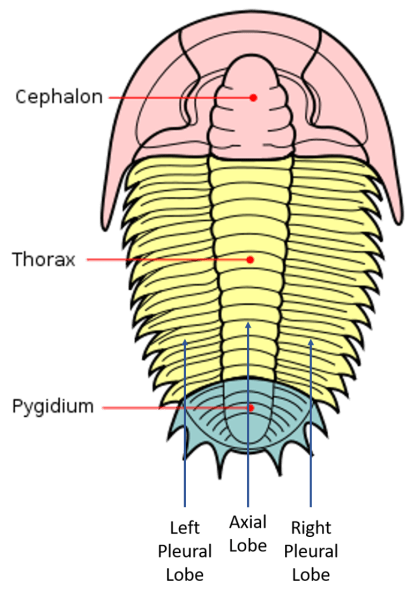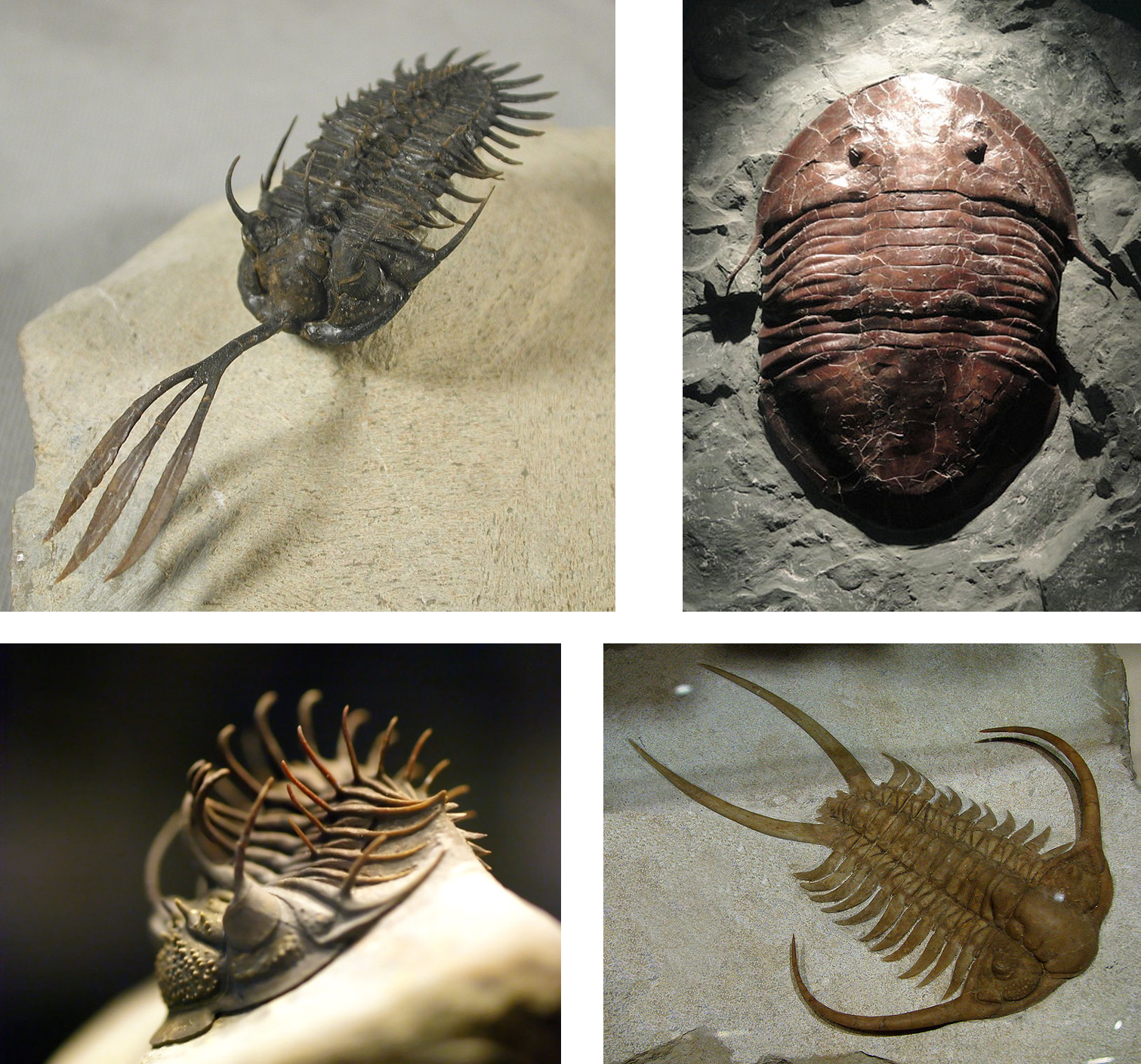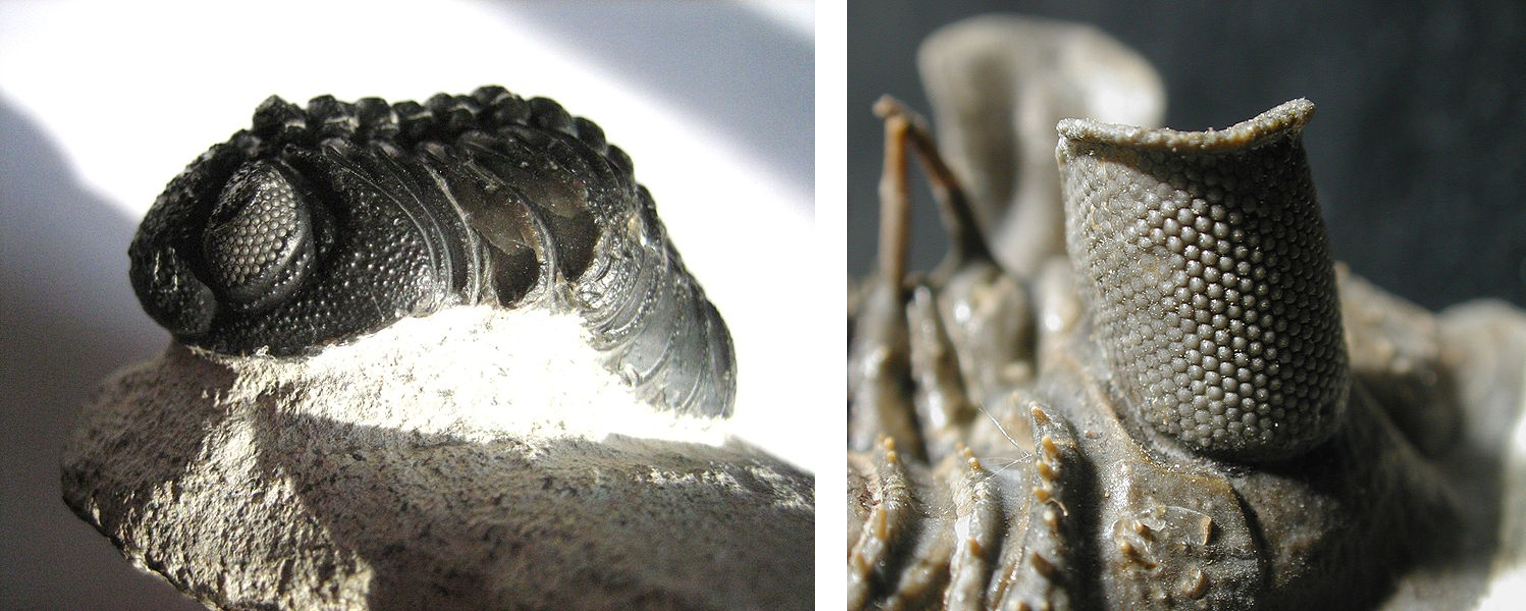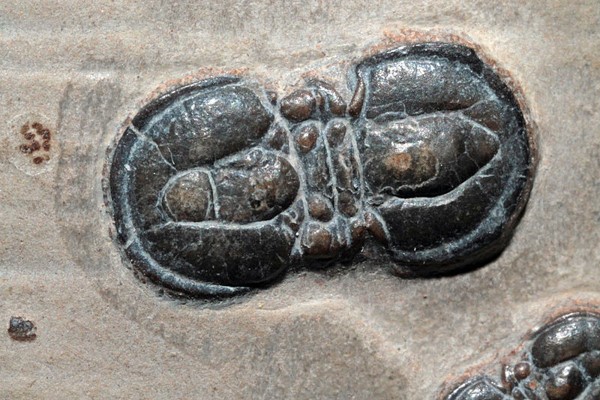Listen to Episode 82 on PodBean, Spotify, YouTube, or your favorite podcast place!
Throughout the Paleozoic Era, the oceans were home to an extraordinarily diverse and charismatic group of hard-bodied arthropods, successful enough in their time to have persisted for over 270 million years, and abundant enough in the fossil record to have become some of the most popular and recognizable fossils in the world. This episode, we talk Trilobites.
In the news
Trends in the evolution of gliding animals.
Strange worm-like creature confused scientists with its missing limbs.
Surprisingly small relative of the famous marsupial lion.
Traces of DNA in dinosaur bone? Read about it here and here.
Trilobites
If you’re a fan of fossils – and even if you’re not – there’s a good chance you’ve seen a trilobite. They’re extremely popular among the general public and scientists alike, as some of the most abundant fossils of the Paleozoic and among the most successful and diverse animal groups in Earth history.
Trilobites are arthropods. Like crustaceans, insects, and arachnids, they have hard exoskeletons, segmented bodies, and jointed limbs, though where exactly they fit on the arthropod family tree, and exactly how they got their start, is still unclear.

Trilobites get their name from the three “lobes” that make up their bodies. They also have three body segments from front to back: the cephalon, thorax, and pygidium.
The earliest trilobites date back to the Cambrian period, around 520 million years ago. From there, they radiate into an incredible diversity of sizes and shapes. They reached the height of their success in the Ordovician, and then had a slow decline through the rest of the Paleozoic Era. After surviving both the Ordovician and Devonian mass extinction events, they finally disappear at the end-Permian, after over 270 million years on Earth.

Thanks to their incredible abundance and diversity in the fossil record, trilobites have been model organisms for paleontologists studying patterns in evolution, extinction, and life history.
Life of a Trilobite
Trilobites lived exclusively in ocean environments, but their lifestyles varied greatly. They ranged from bottom-dwelling scavengers to fast-swimming predators, and some even appear to have been filter-feeders or algal grazers. Some were short and smooth, others long and spiky. Some only grew a few millimeters long, while others could be over half a meter in length. Their sophisticated compound eyes ranged from small and crescent-shaped to huge and globular, and many species lost their eyes completely!



The mysterious agnostids
Also in this episode, we tackled the topic of the agnostids. These are an unusual group of extinct trilobite-like animals whose relationships and ecology have been somewhat mysterious. Some have considered them a subgroup of trilobites, others argue they’re close relatives of trilobites, and some evidence suggests they may be close cousins of crustaceans. For more detailed information, you can check out this 2019 paper about “the agnostid problem.“

More on Trilobites
For a quick introduction, read this Trilobite Quick Guide (non-technical).
For a real deep dive, Trilobites.info is an excellent thorough reference (non-technical).
For a slightly more technical overview, read Fortey’s The Lifestyle of The Trilobites.
—
If you enjoyed this topic and want more like it, check out these related episodes:
- Episode 85 – The Ordovician Mass Extinction
- Episode 117 – Crabs and Carcinization
- Episode 99 – Evolution of Insects
We also invite you to follow us on Twitter, Facebook, or Instagram, buy merch at our Zazzle store, join our Discord server, or consider supporting us with a one-time PayPal donation or on Patreon to get bonus recordings and other goodies!
Please feel free to contact us with comments, questions, or topic suggestions, and to rate and review us on iTunes!
now you must cover the end-ordovician, as it was very important for trilobites.
Also, it’s probably the least-covered (or most ignored) mass extinction, at least in paleo sci comm sources.
As a side note, for those interested in Isotelus rex, episode 1 of palaeocast has a great interview with Dave Rudkin about its discovery, in a very harsh environment near the polar bear capitol of the world.
LikeLiked by 1 person
Indeed! It’s also the only one of the “Big 5” we haven’t covered yet!
LikeLiked by 1 person